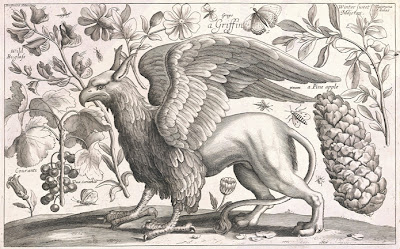Words come and go, developing over time, changing, embraced or forgotten according to the whims of speakers and writers. But one category of words is a little different. These are words that are deliberately coined and introduced by a single person, and (this is the tricky part) actually make it into enduring common usage. Here are a few made-up words worth noting.
truthiness - n., the quality of seeming true, even when contradicted by fact or reason
truthiness - n., the quality of seeming true, even when contradicted by fact or reason
This is sort of the poster child for modern coinings. In fact, the form has existed for centuries, but only as an out-of-work synonym for truthfulness. In its current meaning it may have been around by 1952, rather than being coined by Stephen Colbert, but Colbert certainly gets credit for popularizing it. It got a lot of press when he introduced it on The Colbert Report in 2005, after which it made it into dictionaries. Only time will tell whether it has staying power, but unfortunately it's likely to last as long as people continue to believe what they want to believe despite all evidence.
watchdog - n., a dog (or person) who does guard duty
This word is first attested in The Tempest in 1610, and I mention it because Shakespeare is the poster child of older coinings. You'll hear claims that Shakespeare invented around 1700 words, but when you're talking about making up new words there are two big problems with that number. First of all, just because a word first appears in print in one of his works, does not mean that Shakespeare made the word up or was the first to use it. A word could be in fairly common use and still not show up in any surviving writing from the time. Secondly, even those words that Shakespeare was the first to use are mostly not true coinings but are new usages of existing words, such as the first use of "blanket" as a verb instead of a noun, or the first use of "assassination" when "assassin" was already in use. So how many truly new words did Shakespeare truly invent? We'll never know. But I'm willing to give him credit for "watchdog."
runcible - adj., originally this had no definition at all and was merely nonsense. But by 1926 a runcible spoon had acquired a meaning: spork
Edward Lear coined the word runcible in his 1871 poem "The Owl and the Pussy-Cat":
(They dined on mince, and slices
of quince,
of quince,
Which they ate with a runcible spoon;
And hand in hand, on the edge of
the sand,
the sand,
They danced by the light of the
moon…)
moon…)
He liked it so much that he later applied it to a cat and then also a hat. He never gave any clue as to what definition it might have, but apparently people loved it enough to give it a meaning just so they could go on using it. However, in my idiolect at least, the word spork, another nice made-up word (apparently coined in 1909 as a trademark) has won out in the hybrid tined spoon department. But I think "runcible" is still worth applying to any indescribable household object you may wish.
galumph - v., to move along heavily and clumsily
This was coined in 1872 by Lewis Carroll in his Jabberwocky. It was one of his "portmanteau words," invented by blending two words together, in this case, "gallop" and "triumph." (Another common portmanteau word is brunch, as is, of course, the aforementioned spork.)
This was made up in 1906 or -07 by Gelett Burgess of purple cow fame, with a picture on a book jacket of a fictional Miss Belinda Blurb shown in all her enthusiasm for the book. Burgess originally meant the word to mock excessively complimentary testimonials and self-praise, but I think now "blurb" is a more neutral word.
supercalifragilisticexpialidocious - adj. (or sometimes more of an interjection), fantastic, wonderful
Made up by Disney song-writers Robert and Richard Sherman for the 1964 movie "Mary Poppins," the catchy song about the word has cemented it in the brain of everyone who's ever heard it. There was a 1965 court case over the word in which it was decided that one could not claim copyright on a word composed of preexisting words and grammatical parts. What that means in terms of ultimate authorship, I'm not sure, and while I'm not in favor of Disney copyrighting words, I have to say that if supercalifragilisticexpialidocious doesn't count as a new word because it reuses existing English parts, then there's probably no such thing as a new word at all!
snalce - n., scheming, conniving vixen; one who uses seductive wiles to manipulate others for her (or his) own gain
The derivation of this word is a misreading of my friend E's sloppy handwriting on a high school note to me (c. 1987), in which she described someone as a "snake." I was so delighted with the sound of the word "snalce," which seems to me to capture so perfectly the scheming, seductive definition, that I've used it ever since, spreading it along the way to family and friends. Please take it into your own vocabulary with my compliments.
So remember, children, making up new words is always fun - the trick is in getting others to understand you!
[Pictures: The Owl and The Pussycat, drawing by Edward Lear, 1871;
Back cover of Are You a Bromide? The Sulphitic Theory Expounded And Exemplified According To The Most Recent Researches Into The Psychology Of Boredom, Including Many Well-Known Bromidioms Now In Use by Gelett Burgess, 1907.]
























